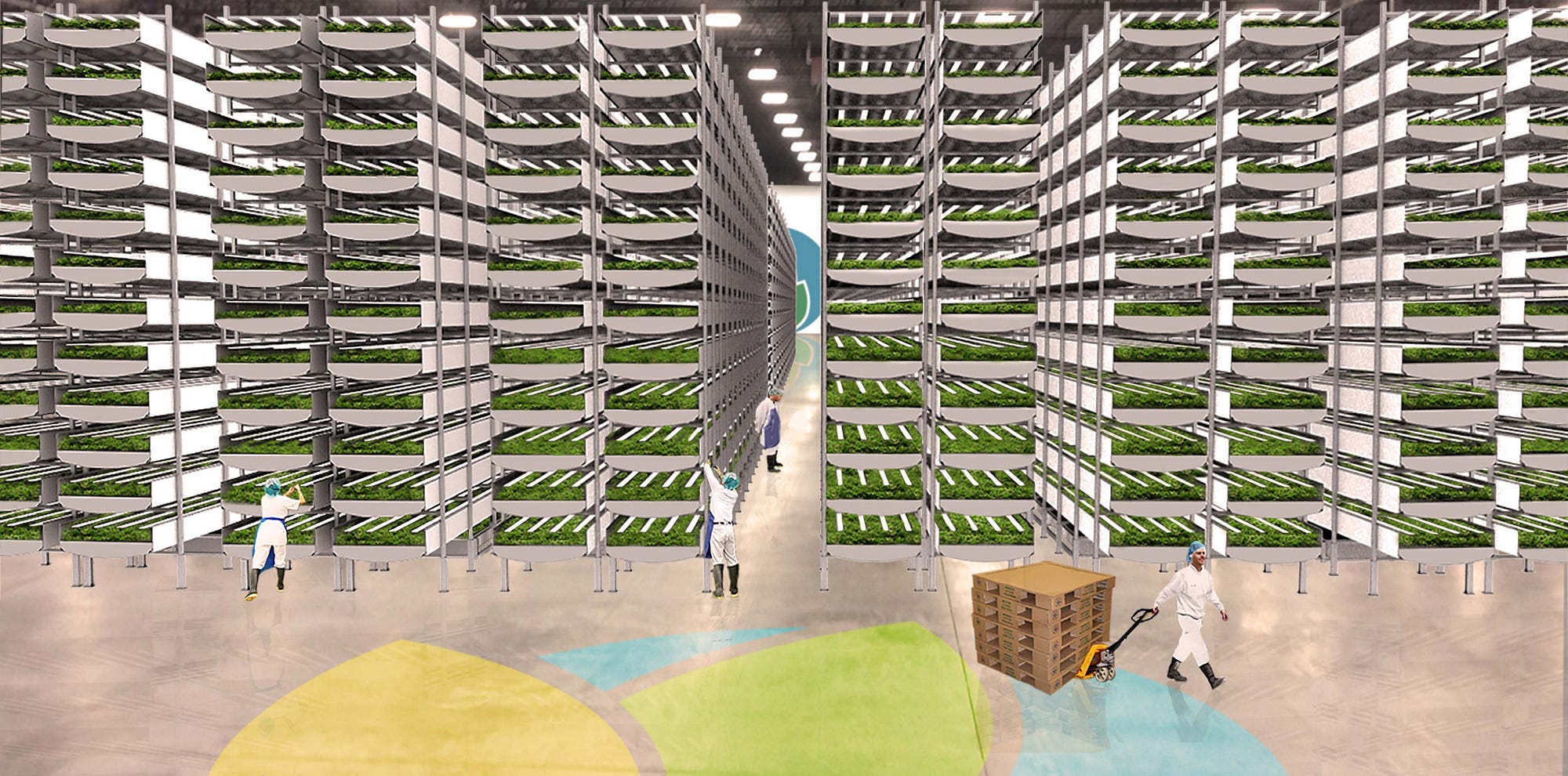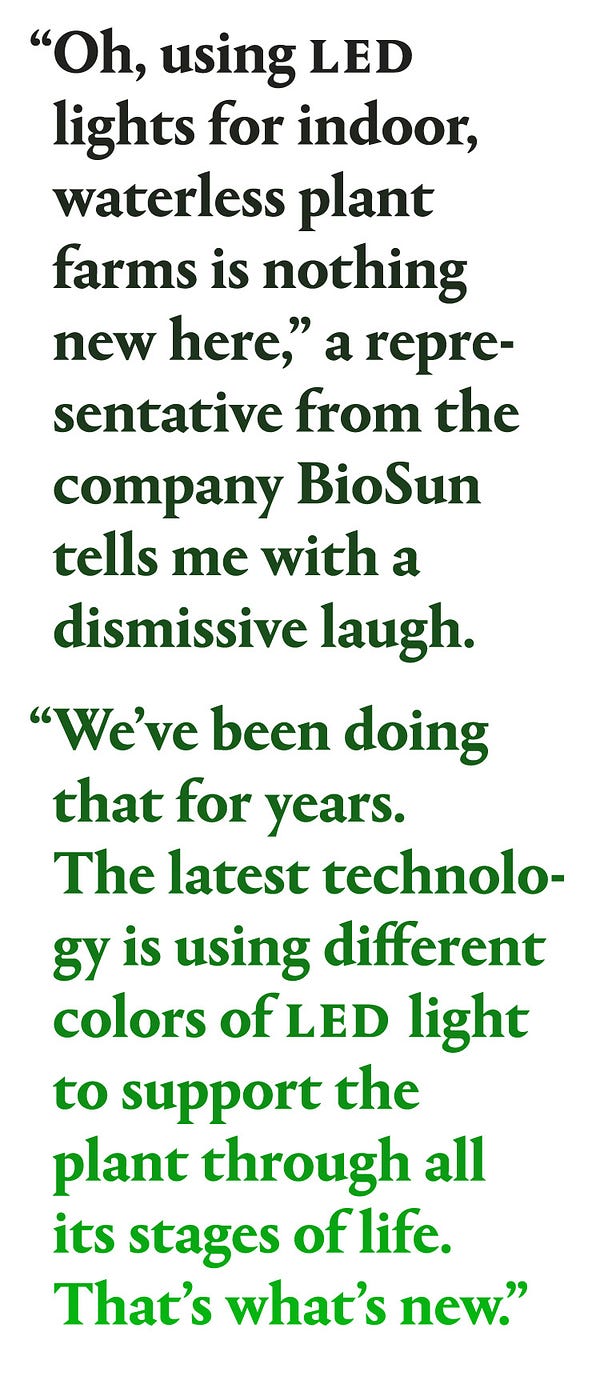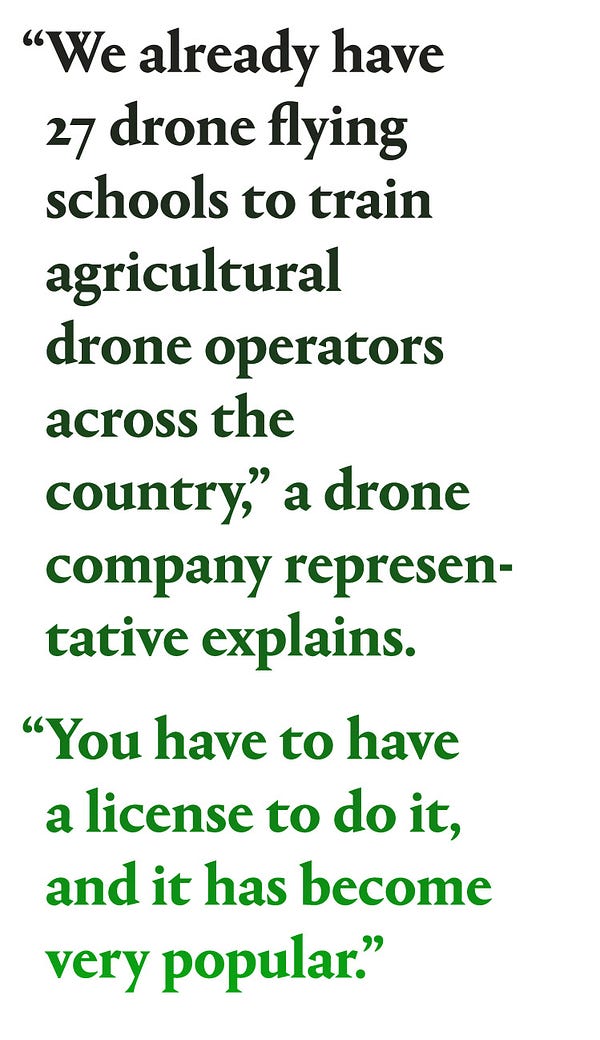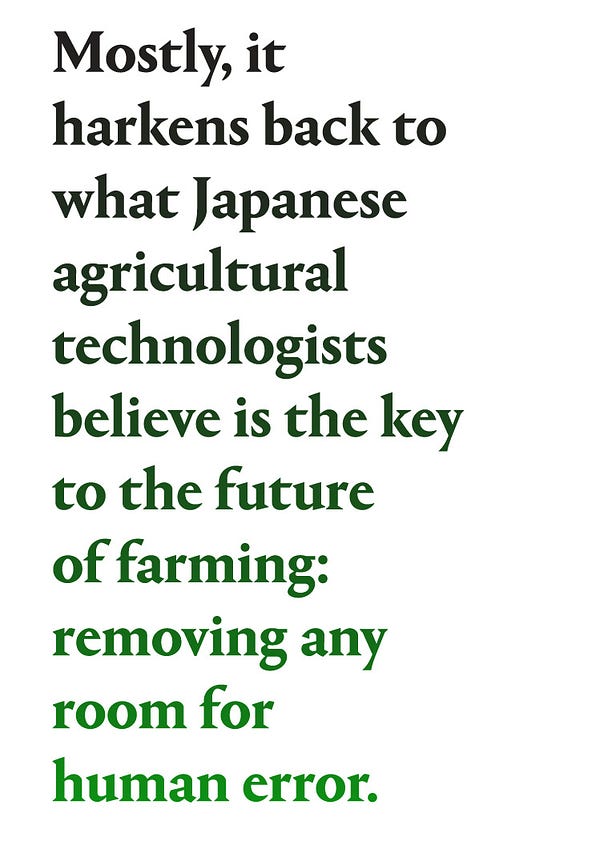


 Arobot that grafts seedlings. Fleets of remote-controlled, self-regulating greenhouses. Organic rice that’s grown entirely by drones.
Arobot that grafts seedlings. Fleets of remote-controlled, self-regulating greenhouses. Organic rice that’s grown entirely by drones.
Even for those of us on the bleeding edge of U.S. farming trends, the coupling of technology and agriculture often exists on the outskirts of what seems fathomable — or even practical.
Sure, we’ve heard about agricultural drones in theory, but that still seems light years away. And indoor, vertical farms that grow plants aeroponically (without sunlight, water or soil)? Judging by the amount of media attention surrounding a soon-to-open aeroponics facility in New Jersey, the practice continues to hold a science fiction-like fascination.
In Japan, though, these kinds of agri-tech innovations are already readily employed — if not downright common — across the country.

At the 2016 Agri World Expojust outside of Tokyo, over 55,000 companies from across Japan and Southeast Asia have gathered to showcase the latest and greatest in farming technology — and I’m in the middle of it all. A veritable three ring circus of flashing flights, wheeling machinery and tiny bowls of free snacks, the event is something of a sensory overload, with enough newfangled bells and whistles confound any old-fashioned notions of where agriculture is headed.
Rural populations across Japan have been in decline for decades, with younger generations casting off the countryside for the lure of city lights and leaving aging farmers with no other choice than to simply watch their land — and craft — whither. Instead, as urban populations have boomed, Japan has seen a massive push towards metropolis-adjacent indoor farming and other forms of argi-tech that can exist within high-density communities. Growing crops so close to the people who will eat them, advocates suggest, means that they are both fresher and healthier when they reach the consumer.
But the technological innovations on the horizon in Japan go far beyond LED-supported lettuce. Behemoth farm drones lay splayed out like metallic, aerial spiders at multiple booths, and salespeople tittered excitedly about how drone farming — especially when it comes to organic crops — means plants can flourish in a more stabilized, consistent fashion. Constant monitoring and an eagle-eye view, it seems, are key.
The rise of drone-based farming has also opened a new career path for many Japanese.

One of the surest signs that technology and agriculture are pairing off for the long-haul is the buy-in of Japan’s telecommunications giant, Nippon Telegraph and Telephone Corporation (or NTT, for short). With an annual revenue of 11 trillion yen, NTT is the granddaddy of Japanese telephones, retaining their oligopolistic grip on landlines nationwide while constantly pivoting into new areas of information technology in order to keep up with younger, nimbler companies. Increasingly, this means investing in Artificial Intelligence for farmers.
“A lot of our community-based research and design goes into trying to help farmers through new inventions,” a company representative says as he hands me a tiny can of fresh vegetable juice. “We’re looking for ways to make farming more productive.”
At the Agri World Expo, NTT’s booth magnetizes crowds, as women in cow-print dresses mingle among drone-explainer videos, oohing and ahhing. The company’s piece de resistance, though, is Scarecrow: an adorable, teddy bear-sized “personal robot” with big, Disney princess eyes and an “S” emblazoned on its chest.
Scarecrow might be small, but its purpose is mighty: the robot has the ability to remotely control an entire farm. One input from the farmer, and Scarecrow can connect via satellite with plant-fertilizing drones, or operate farm machinery with a single instruction. Since it’s constantly getting feedback and input from the fields, the new technology has the potential to streamline farm operations while serving as a singular point of data retention and collection from season-to-season.

“New technologies are a lot more efficient,” says a representative of E-Minori, a fledgling company which uses sensors to alert farmers if their greenhouse conditions fall below peak standards. “In the past, farmers would only have their experiences and intuition to know if temperatures or humidity inside their greenhouses was off — and they can’t be there all the time. Now, it can be dealt with automatically.”
This also means ensuring that nature doesn’t have the chance to wreak havoc, either. Between plant-eating pests, see-sawing temperatures and the threat of natural disasters like tsunamis and earthquakes, farming that’s tightly controlled — and, yes, indoors — means that no matter what’s going on in the actual dirt, plants will continue to flourish inside their perfectly-regulated, safe bubbles.
“Indoor farming is the way of now, and the way of the future, because it’s not impacted by the temperature,” a man from Clean Farm — a soil-free, water-free aeroponics company that calls itself a “flexible plant factory” — notes. “It is completely isolated from the outside.”
And while, in the U.S., worries about the impact of hazardous materials on crops is a catch-all concern, in Japan, the impetus feels even more urgent in the wake of the 2011’s nuclear plant meltdown in Fukushima, which resulted in the radioactive contamination of all farmland, groundwater and soil for hundreds of miles. In turn, the promise of disease-free, pollutant-free produce means that families are a natural target audience for the products from many agri-tech companies. Images of toddlers gleefully biting into a fistful of LED-supported spinach are littered across company advertising, and “safe eating” (which is a few standard deviations beyond the concept of organic-only “clean eating”) has become rhetorical dogma.
Larger profits are a major boon, too. Using indoor systems, farmers are able to tinker with seasonality by growing traditionally summer-only crops in the winter (and vice-versa) to sell for higher prices.
“In the wintertime, the sun sets at 5 p.m., which means growing conditions aren’t good,” the BioSun associate notes. “Using indoor systems, farmers can make produce grow faster — and sell faster — because the sunlight and seasons don’t matter, which means they can make more money.”
Still, there are perhaps a few kinks to work out.
After sampling some coriander grown using an indoor vertical system, a colleague of mine noted that while it tasted great, the plant — which is usually quite fragrant — had no smell.
The science behind this seems like a strange, and almost unsettling, development. How can an herb lose one of its most notable characteristics simply by being grown indoors? If LED farms cause such a dramatic shift in the actual chemical make-up of the plant through their modifications, it seems like a potentially slippery slope. Seeing the concern in my face, a company representative nervously brushed it off as a good thing, chalking up the fragrance-free herb to the fact that it lacked the acidity typical of plants grown in soil.
Reassurances aside, there’s no doubt in my mind that the company will soon be going back to the drawing board on this issue, figuring out yet another new way to use technology as both a progressive tool and problem-solver in the world of agriculture
No comments:
Post a Comment